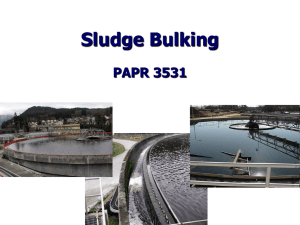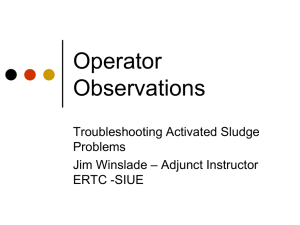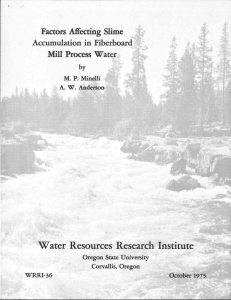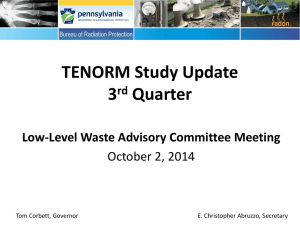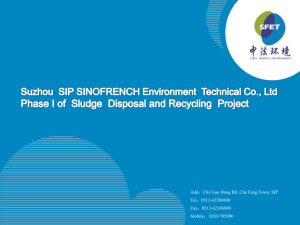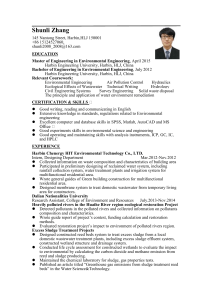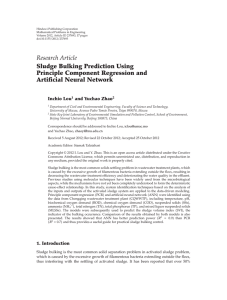Sludge Bulking: Polysaccharide vs. Filamentous - Causes & Control
advertisement
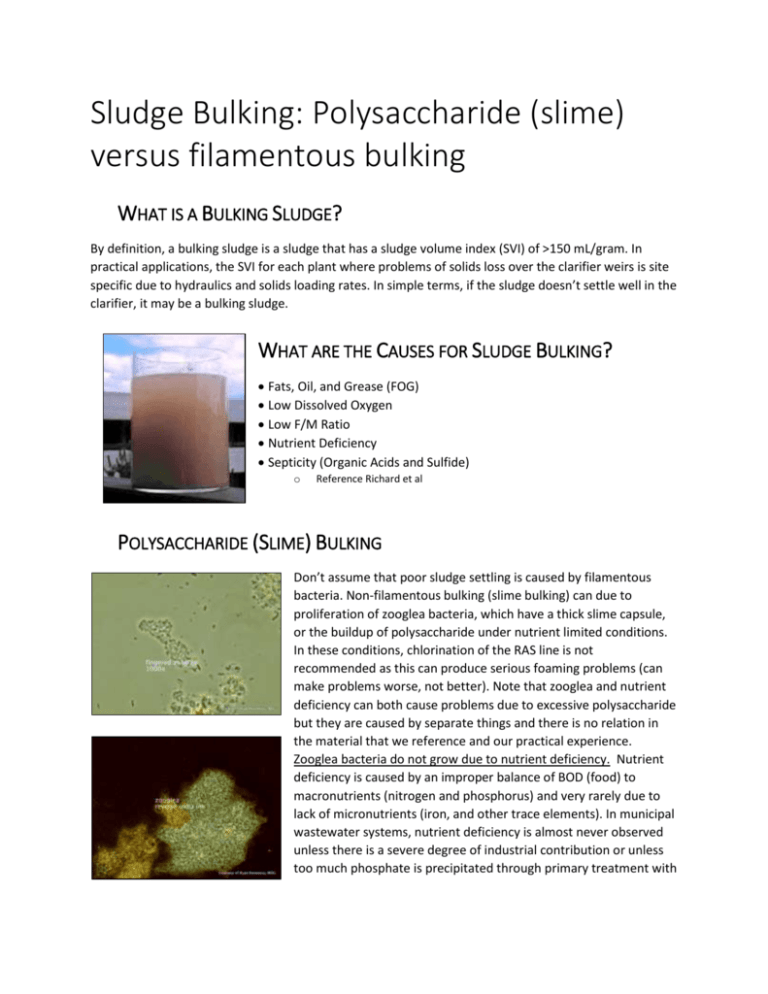
Sludge Bulking: Polysaccharide (slime) versus filamentous bulking WHAT IS A BULKING SLUDGE? By definition, a bulking sludge is a sludge that has a sludge volume index (SVI) of >150 mL/gram. In practical applications, the SVI for each plant where problems of solids loss over the clarifier weirs is site specific due to hydraulics and solids loading rates. In simple terms, if the sludge doesn’t settle well in the clarifier, it may be a bulking sludge. WHAT ARE THE CAUSES FOR SLUDGE BULKING? Fats, Oil, and Grease (FOG) Low Dissolved Oxygen Low F/M Ratio Nutrient Deficiency Septicity (Organic Acids and Sulfide) o Reference Richard et al POLYSACCHARIDE (SLIME) BULKING Don’t assume that poor sludge settling is caused by filamentous bacteria. Non-filamentous bulking (slime bulking) can due to proliferation of zooglea bacteria, which have a thick slime capsule, or the buildup of polysaccharide under nutrient limited conditions. In these conditions, chlorination of the RAS line is not recommended as this can produce serious foaming problems (can make problems worse, not better). Note that zooglea and nutrient deficiency can both cause problems due to excessive polysaccharide but they are caused by separate things and there is no relation in the material that we reference and our practical experience. Zooglea bacteria do not grow due to nutrient deficiency. Nutrient deficiency is caused by an improper balance of BOD (food) to macronutrients (nitrogen and phosphorus) and very rarely due to lack of micronutrients (iron, and other trace elements). In municipal wastewater systems, nutrient deficiency is almost never observed unless there is a severe degree of industrial contribution or unless too much phosphate is precipitated through primary treatment with addition of iron salts. Zooglea bacteria favor higher F/M ratios and grow due to certain alcohols and organic acids in the wastewater. FILAMENTOUS BULKING Filamentous bulking is caused by the proliferation of bacteria (filaments) that outcompete floc forming bacteria. The causes for filamentous bulking can be viewed on the previous page. Filamentous bacteria can be identified and with careful evaluation using ranking systems such as Dr. Michael Richard’s scoring system, the cause of the root cause of the bulking sludge problem can be identified. Generally, filamentous bulking occurs once filamentous abundance reaches very common or greater (>15 filaments per average floc). Note that floc strength is very important; strong flocs may be able to support higher amounts of filaments and not cause bulking, while weak flocs do not have the weight and strength, and thus the SVI can be elevated at lower filament abundance in these situations. Filamentous bulking can occur within the floc, where weak and diffuse flocs are created, and also can occur as filamentous bacteria bridge the flocs. In situations where inter-floc bulking is occurring, it is often not possible to view these filaments without use of a phase contrast microscope. SUMMARY Filamentous bulking and polysaccharide (slime) bulking are common causes of poor settling sludge. Other possibilities for poor settling may include hindered settling due to denitrification (there is an upward force working against settling in which nitrogen gas wants to float the sludge), or hindered settling due to the mixed liquor concentration being too high. If your sludge is not settling as it should, it is recommended to send out a sample for microscopic evaluation to a trained professional to determine the cause of bulking, and also the root cause of the problem. Once this information is obtained, short term and long term control strategies can be evaluated. REFERENCE 3rd Edition Manual on the Causes and Control of Activated Sludge Bulking, Foaming, and Other Solids Separation Problems, D. Jenkins. M.G. Richard, G. T. Daigger, 2003
